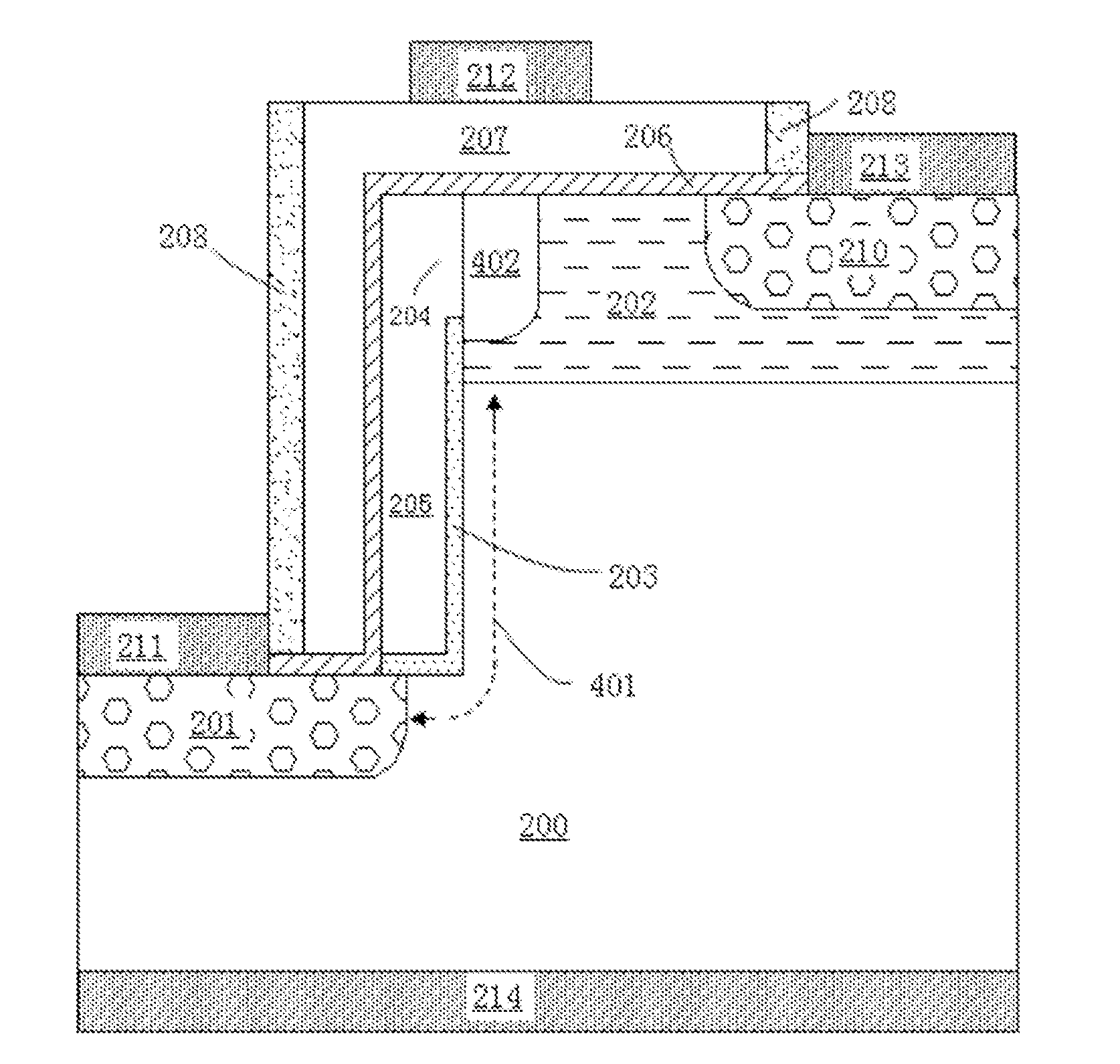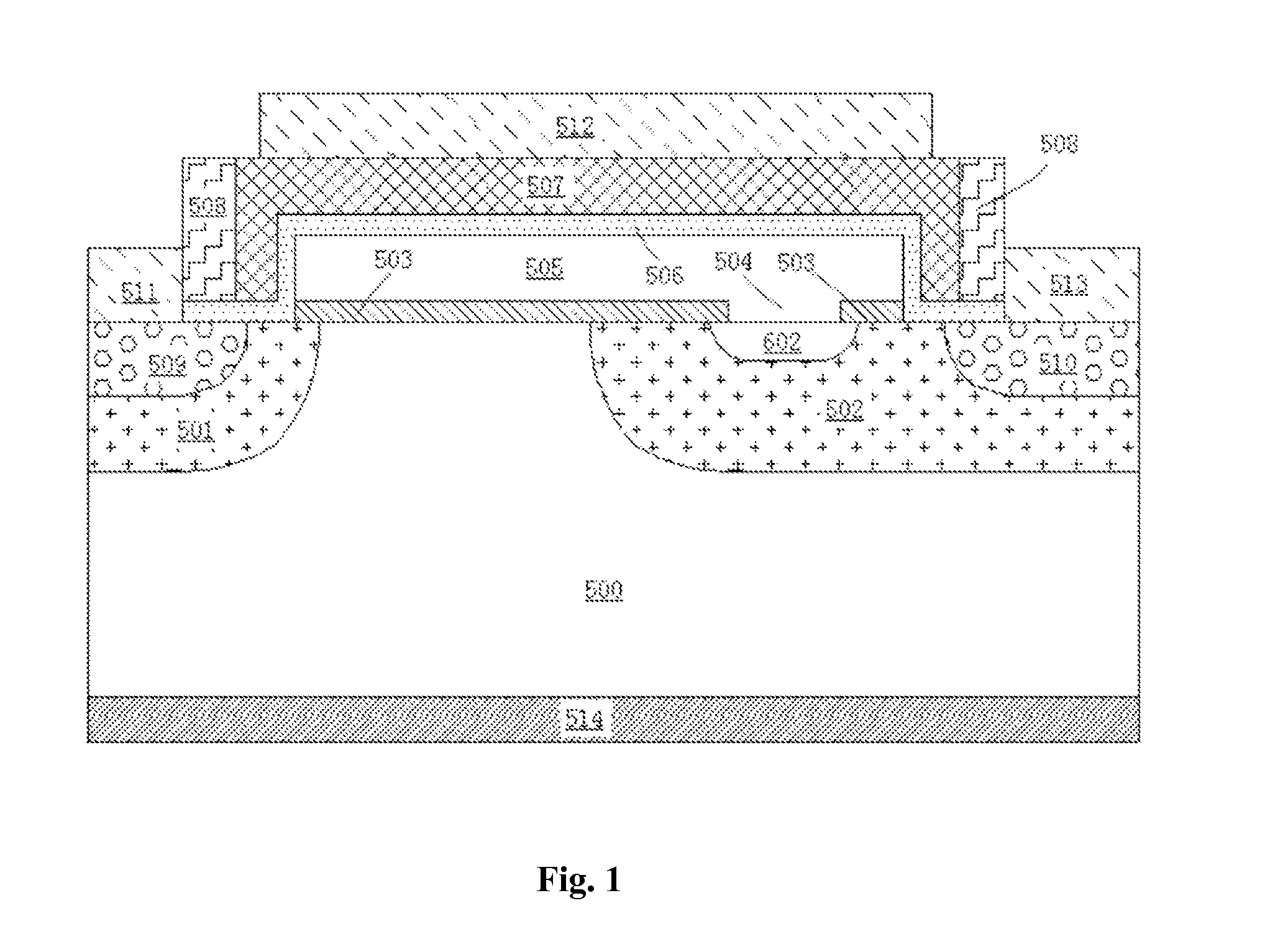Semi-floating-gate device and its manufacturing method
- Summary
- Abstract
- Description
- Claims
- Application Information
AI Technical Summary
Benefits of technology
Problems solved by technology
Method used
Image
Examples
Embodiment Construction
[0038]The disclosure is further detailed in combination with the drawings and the embodiments. In the figures, to facilitate illustration, the thickness of the layer and region is magnified, so the size does not represent the actual dimension. The reference figures are the schematic views of a typical embodiment for the disclosure. The embodiment shall not be limited to the specific sizes in the regions shown in the figures, but include all the shapes obtained, for example, a size with a deviation caused in manufacturing. For instance, the curve obtained through etching is generally bent or round. However, in the embodiment of the disclosure, it is indicated by a rectangle, which shall not be regarded as a limit to the scope of the disclosure.
[0039]FIG. 2a show three sectional views of an embodiment of the semi-floating-gate device disclosed in the disclosure along the length direction the device's channel. As shown in FIG. 2a, the semi-floating-gate device disclosed in the disclosu...
PUM
 Login to View More
Login to View More Abstract
Description
Claims
Application Information
 Login to View More
Login to View More - R&D
- Intellectual Property
- Life Sciences
- Materials
- Tech Scout
- Unparalleled Data Quality
- Higher Quality Content
- 60% Fewer Hallucinations
Browse by: Latest US Patents, China's latest patents, Technical Efficacy Thesaurus, Application Domain, Technology Topic, Popular Technical Reports.
© 2025 PatSnap. All rights reserved.Legal|Privacy policy|Modern Slavery Act Transparency Statement|Sitemap|About US| Contact US: help@patsnap.com



